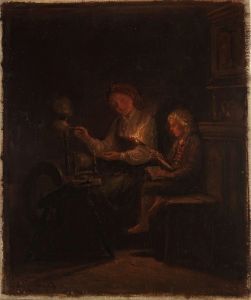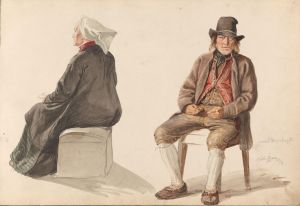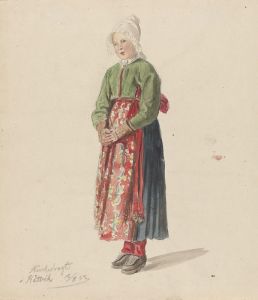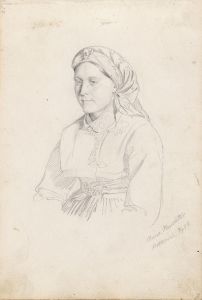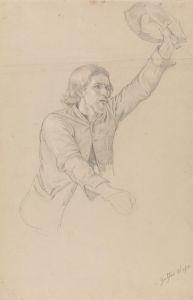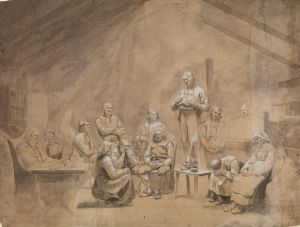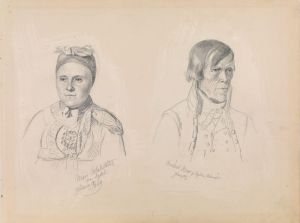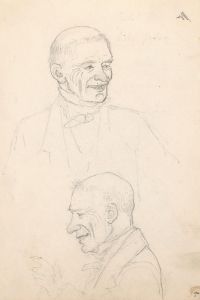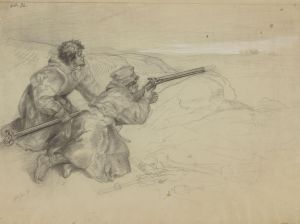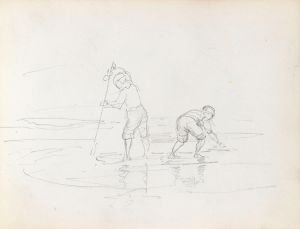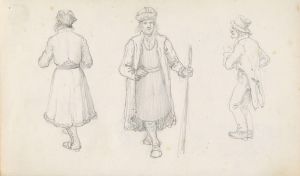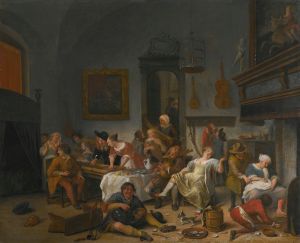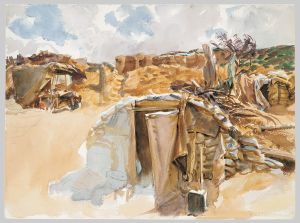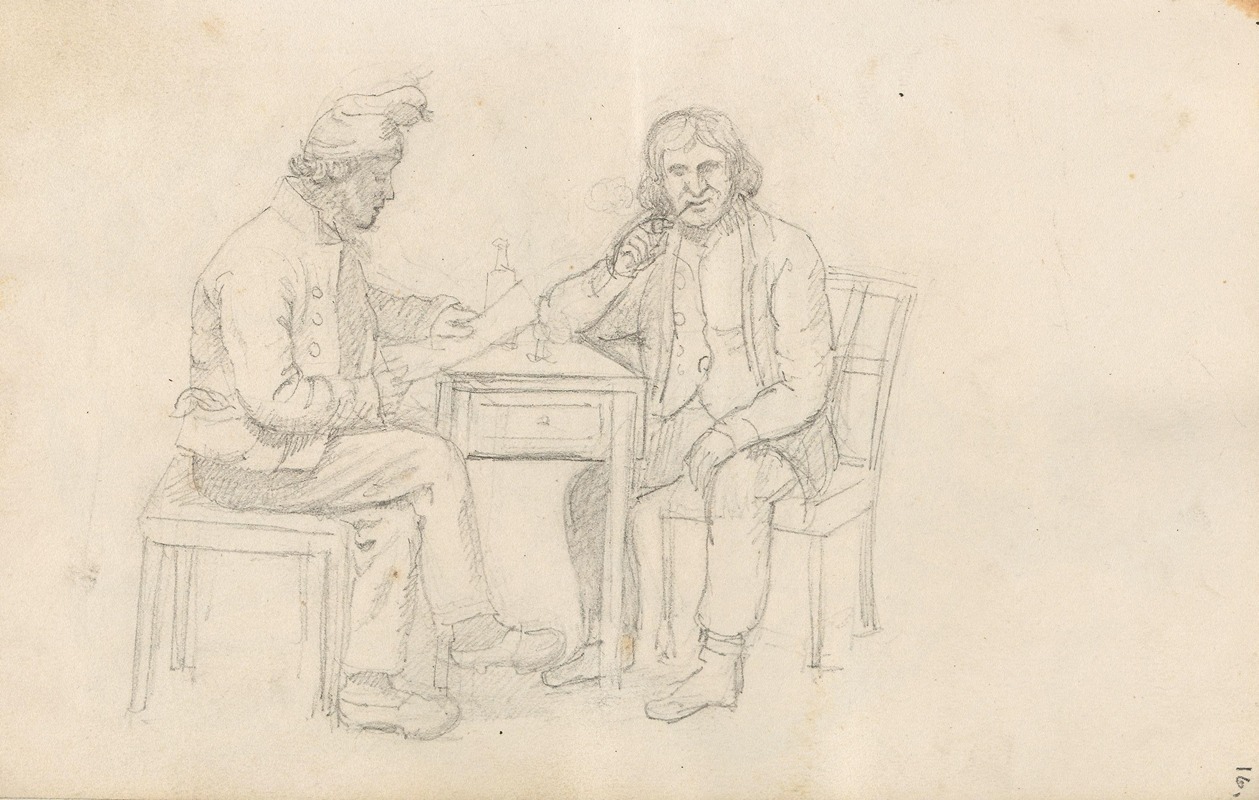
To menn ved et bord
A hand-painted replica of Adolph Tidemand’s masterpiece To menn ved et bord, meticulously crafted by professional artists to capture the true essence of the original. Each piece is created with museum-quality canvas and rare mineral pigments, carefully painted by experienced artists with delicate brushstrokes and rich, layered colors to perfectly recreate the texture of the original artwork. Unlike machine-printed reproductions, this hand-painted version brings the painting to life, infused with the artist’s emotions and skill in every stroke. Whether for personal collection or home decoration, it instantly elevates the artistic atmosphere of any space.
Adolph Tidemand was a prominent Norwegian painter in the 19th century, known for his detailed and vivid depictions of Norwegian folk life and traditions. One of his notable works is "To menn ved et bord," which translates to "Two Men at a Table." This painting is an exemplary representation of Tidemand's focus on everyday life and his ability to capture the essence of Norwegian culture during his time.
"To menn ved et bord" portrays two men seated at a table, engaged in what appears to be a moment of conversation or contemplation. The setting is intimate, with the men positioned closely, suggesting a sense of camaraderie or a shared experience. Tidemand's attention to detail is evident in the way he renders the men's clothing and the objects on the table, which provide clues about the period and social context of the scene. The clothing is typical of rural Norwegian attire from the 19th century, reflecting Tidemand's interest in documenting the traditional costumes and lifestyles of his countrymen.
The painting is characterized by its realistic style, a hallmark of Tidemand's work. He was part of the Düsseldorf School of painting, which emphasized meticulous detail and a realistic portrayal of subjects. This influence is apparent in "To menn ved et bord," where the textures of the men's clothing and the wooden table are rendered with precision. The use of light and shadow in the painting adds depth and dimension, enhancing the realism and drawing the viewer into the scene.
Tidemand's work often focused on themes of national identity and cultural heritage, and "To menn ved et bord" is no exception. By depicting ordinary people in a familiar setting, Tidemand celebrated the everyday lives of Norwegians and contributed to a growing sense of national pride during a time when Norway was seeking to establish its identity separate from Denmark and Sweden. His paintings were instrumental in fostering a sense of cultural unity and appreciation for Norway's rural traditions.
While "To menn ved et bord" may not be as widely recognized as some of Tidemand's other works, such as "Haugianerne" or "Brudeferden i Hardanger," it remains an important piece within his oeuvre. It exemplifies his skill in capturing the subtleties of human interaction and his dedication to portraying the cultural landscape of Norway.
Adolph Tidemand's legacy as a painter is significant, as he played a crucial role in documenting and preserving Norwegian cultural history through his art. His works continue to be celebrated for their historical value and artistic merit, offering insights into the lives and traditions of 19th-century Norway. "To menn ved et bord" is a testament to Tidemand's ability to convey the richness of Norwegian life and his contribution to the country's cultural heritage.





